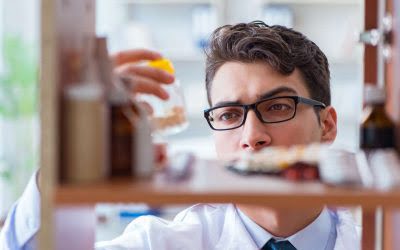Content
This impact results in different ways of thinking, feeling, and behaving. This is exactly why people with addiction take risks, make poor decisions, and behave the way they do. AbuseThe next stage of the addiction cycle is when an individual starts using a substance on a recurring improper basis. This could mean an individual starts to increase their alcohol consumption as a response to anxiety or stress, or they begin taking higher doses of pain medication without consulting their doctor.
- When you aren’t looking at the parts and sum of the issues, it’s much harder to break the cycle of addiction.
- This model was developed from research looking at how change occurs in “natural recovery” from addictions.
- To people who cannot relate to the triggers, it will only seem like the user will grab on to any excuse to take drugs or alcohol.
- They may appreciate the way that the last drink made them feel and start having one last drink more frequently.
- Once individuals have tried a substance, they might move to the experimentation stage.
For example, people who use methamphetamine for a long time may experience paranoia, hallucinations, and delusions that may be mistaken for symptoms of schizophrenia. The preoccupation/anticipation stage of the addiction cycle is the stage in which a person may begin to seek substances again after a period of abstinence. In people with severe substance use disorders, that period of abstinence may be quite short .
What is the cycle of addiction?
Dopamine plays a role in our survival instincts, such as eating, as well as activities that bring pleasure to the body naturally. However, when an addictive substance, like a drug or alcohol, stimulates dopamine artificially, the brain prompts individuals to more frequently engage in addictive behaviors. This is because, once dopamine has been stimulated by artificial factors, the brain keeps asking for more, leading to continued substance use. Current research has indicated that the effects of dopamine from drugs are much more exhilarating than the dopamine produced naturally. Daily users may rotate through the https://ecosoberhouse.com/ daily or several times throughout the day.
For example, nicotine has a short half-life, which means smokers need to smoke often to maintain the effect. In contrast, THC, the primary psychoactive compound in marijuana, has a much longer half-life. As a result, marijuana smokers do not typically smoke as frequently as tobacco smokers.40 Typical patterns of use are cycle of addiction described below for the major classes of addictive substances. Substance abuse occurs when drugs and/or alcohol have affected your life in a harmful manner. After a person becomes dependent on a substance from repeated use over time, the powerful euphoric effects can quickly cause the individual to become addicted.
Treatment Programs That Help to Break the Cycle of Addiction
This increased tolerance level is caused by chemical changes in your brain. One of the greatest reasons for addiction, however, is due to genetics. The makeup of your brain can cause you to need a larger amount of stimulation.

Group members offer support and hold each other accountable for reaching goals. A therapy group is where individuals struggling with addiction can learn communication skills and develop self-confidence. A high-risk user may believe they can perform tasks like operating machinery at work or driving while intoxicated. They may attract coworkers’ attention due to unsafe work habits or neglect to do their share of the work. Their behaviors lead to strained relationships and endangering others and themselves.
The Maintenance Stage
As grim and as final as the addiction cycle might sound, with it being a fixed cycle with no chance of reform, there is a window of opportunity that could be utilized to help the person get back on track. The patterns that emerge could either have real triggers, since not everyone is equipped with ample coping skills to help through a very rough patch. The triggers could vary widely between physical ones, such as those who suffer from chronic pain, who later discover that their painkillers tend to create a euphoric sense in them. The trigger could also be anchored on some mental need, such as those who take stimulants because they have to review for a test, or for someone who needs to be awake and alert enough to do a presentation. Ultimately, Lembke says, this is a universal problem – not one limited to those of us struggling with the disease of addiction – that has come with living in modern life. And to restore our sanity, collectively we must rethink how to navigate a dopamine overloaded world.
- It is when someone who was sober for a short time comes back to using after making a mistake or just feeling a major urge to use.
- Based on that learned behavior, emotional triggers can quickly morph into an overwhelming craving to use drugs or alcohol.
- Throughout that process, he learned the importance of helping others and living by spiritual principles.
- You have to step back and holistically examine your approach by assessing what’s working and what isn’t.
- She works with The Freedom Center team to develop and implement policies, procedures and oversees Intakes and Transportation.
- It can also cause negative behavioral consequences, which may result in bodily harm to self or others.